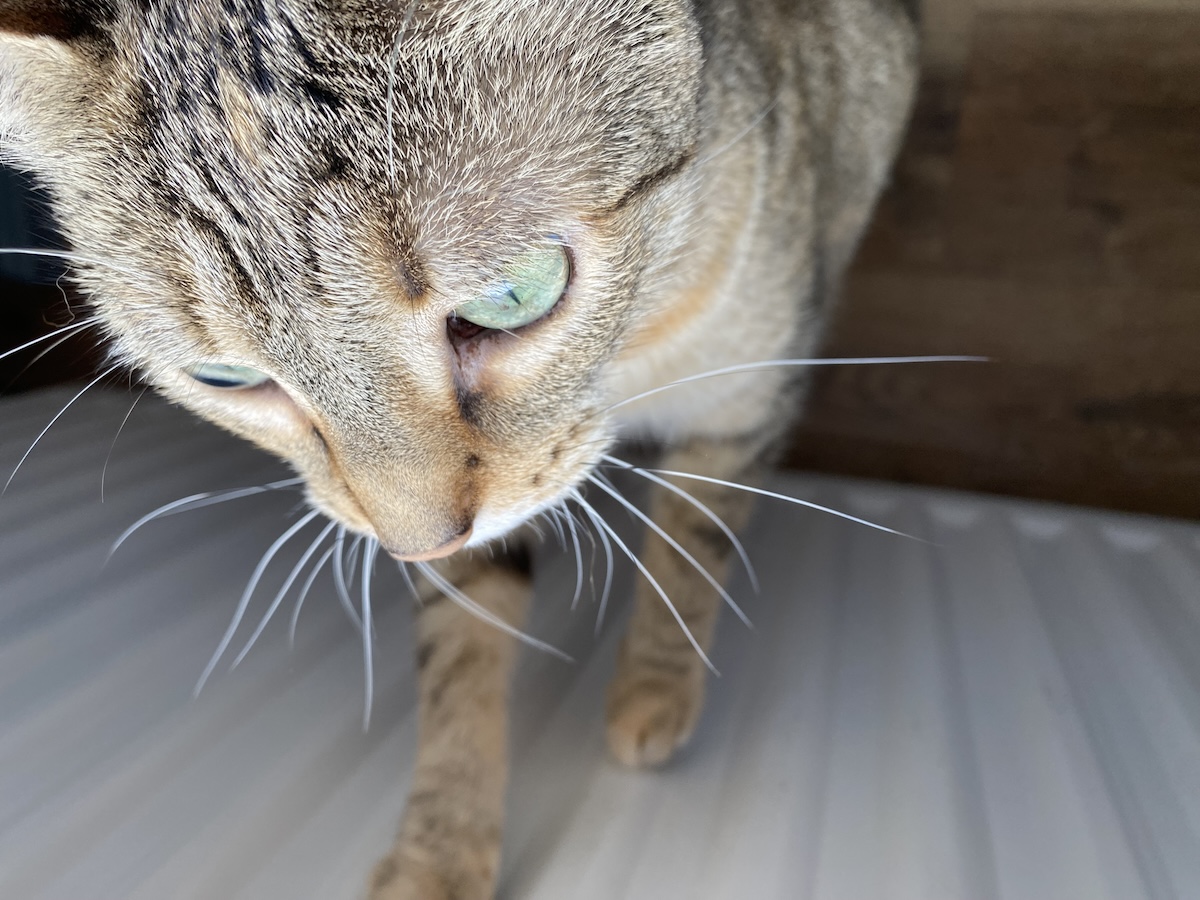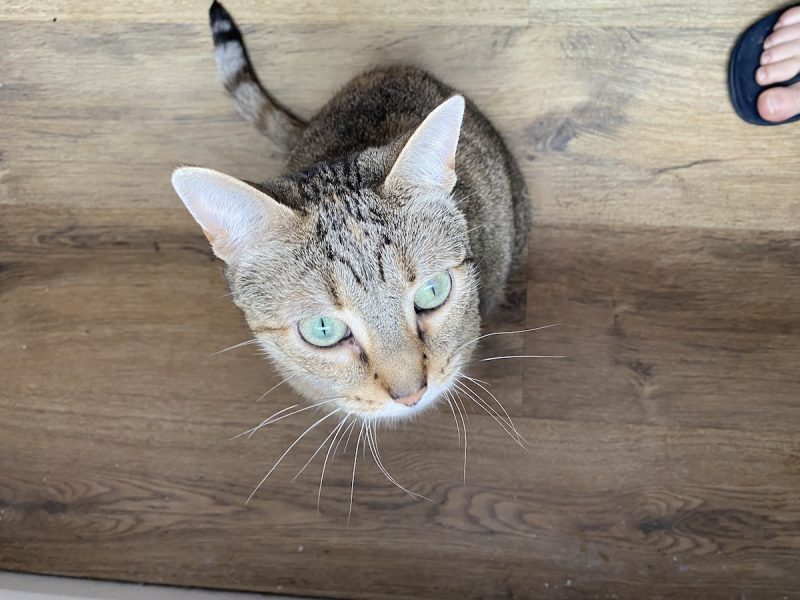Hi, I’m Dr. Lauren! Read my introduction to learn more about me and my two adventurous cats, Pancake and Tiller.
Love biters. No, not that kind…cat love biters.
We’ve all probably met them: the loveable cat that gets excited, then bites you. Or the one that comes up to you and gets a pat, and gives you a gentle bite.
Tiller is one of the world’s great love biters. In fact, it’s far more likely you’ll get a love bite than a pur if you interact with her. Even Pancake is not immune- a few licks, and then a good bite. No wonder Pancake no longer shares the bed with Tiller-zilla.

And Tiller is not alone.
I’ve met a variety of different types of cats in my work: dog cats, people cats, cat cats, and biters. Clients often come in saying: my cat bites me. You might think that people are talking about a cat that is an aggressive or fear biter, but that is rarely the case. Most clients that talk about their biter cats, refer to those cats that intermittently exchange a friendly pat for an equally friendly bite. They don’t break the skin, they cause surprise more than pain, and they are sometimes adorable, when they do it slowly, gently, and just hang there.
But just why do cats do this familiar, gentle, persistent biting?
To be honest, no one really knows! If only cats could talk… But here are a few theories:
- Mother/kitten instinct and nursing: It’s possible that this instinct which involves oral stimulation by the kitten on the queen along with the release of bonding hormones, extends into biting, in adult life, and the adult cat’s human family.
- Biting is a way that many feline emotions are expressed – not just anger. Sexual desires, play, social boundaries and more are all developed via biting. Potentially cats are using the biting to communicate more than we realize?
- The vomeronasal organ: In cats, the roof of their mouth holds the vomeronasal organ, which is able to detect various pheromones. Pheromones are chemical signatures that can be “smelled” by this organ (humans have all but lost theirs). It’s possible that biting puts a cat into a better position to use their vomeronasal organ to “flesh out” (pardon the pun) the situation when interacting with familiar humans.

But, in the end, we simply don’t know. Tiller will remain the household “carpet shark” and her “shark bites” will remain a fun and endearing danger whenever we traverse up or downstairs. Such is the risk of owning cats.
